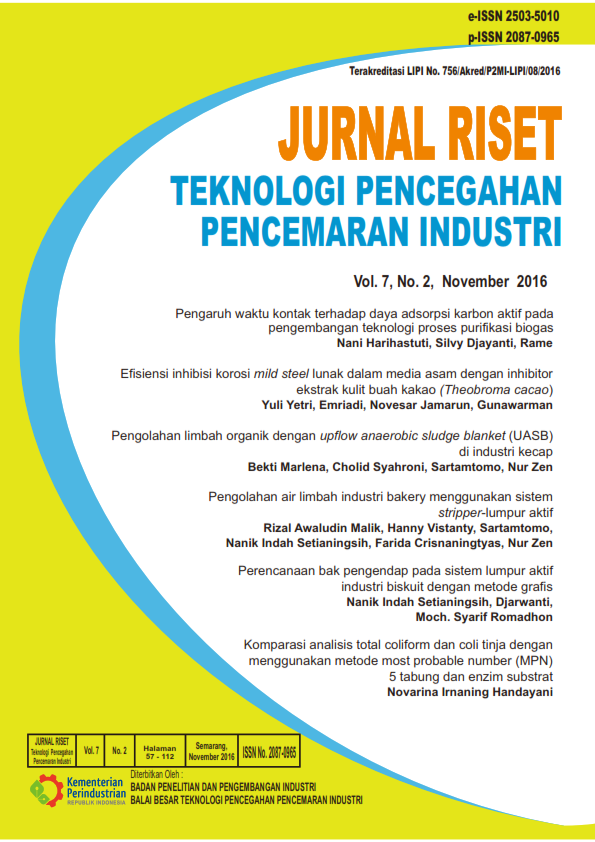Pengolahan Air Limbah Industri Bakery Menggunakan Sistem Stripper-Lumpur Aktif
DOI:
https://doi.org/10.21771/jrtppi.2016.v7.no2.p89-98Keywords:
surfaktan, air limbah bakery, stripper, lumpur aktifAbstract
Air limbah industri bakery memiliki karakteristik kandungan organik, lemak, dan surfaktan yang tinggi. Keberadaan surfaktan pada air limbah dapat mengganggu proses degradasi kandungan organik dan lemak pada instalasi pengolahan air limbah khususnya pengolahan secara biologis/lumpur aktif. Studi ini membahas tentang performa integrasi system stripper-lumpur aktif yang diaplikasikan untuk mengolah air limbah industry bakery dalam skala full scale. Proses stripper dilakukan dengan menggunakan kolom yang diintegrasikan dengan bak aerasi pada kisaran HRT (waktu tinggal) 24 jam. Proses stripper memberikan efisiensi enurunan COD dan surfaktan tertinggi sebesar 96% dan 80%. Proses lumpur aktif digunakan untuk mengolah keluaran dari proses stripper dengan karakteristik lumpur aktif MLSS 4000-4500 mg/L, FM/ rasio 0,268, sludge age 11 hari dan HRT 24 jam, proses degradasi dengan lumpur aktif ini mampu memberikan efisiensi penurunan COD dan surfaktan sebesar 79% dan 88%. Hasil penelitian menunjukkan bahwa unit IPAL dengan menggunakan sistem stripper-lumpur aktif memiliki efisiensi penurunan COD, TSS, dan BOD sebesar 98,9%, 87,9%, dan 96,4%, sehingga sistem ini merupakan teknologi yang tepat untuk diterapkan pada pengolahan limbah industri bakery.References
Bitton, G., 2010. Wastewater Microbiology: Fourth Edition., Willey-Liss. ISBN: 978-0-470-63033-4
.
.
.
Downloads
Published
How to Cite
Issue
Section
License
Copyright (c) 2016 Rizal Awaludin Malik, Hanny Vistanty, Sartamtomo, Nanik Indah Setianingsih, Farida Crisnaningtyas, Nur Zen

This work is licensed under a Creative Commons Attribution-NonCommercial-ShareAlike 4.0 International License.











